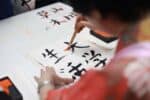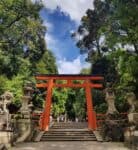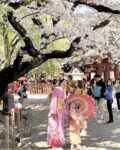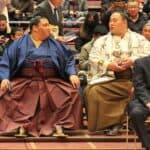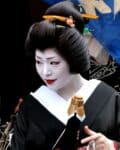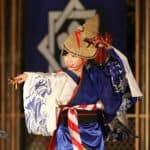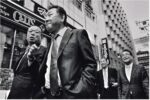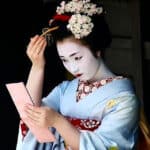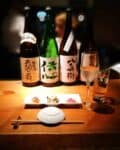Japan has been and continues to be a major contributor to global development. Its contribution to fashion, architecture, media, literature, food, and many more fields cannot be understated.
We have Japan to thank for things like walkmans, sushi, karate, and people like Marie Kondo.
But how is Japanese culture different from American culture? Japanese culture and American culture are very different. They have different languages, religions, food habits, beliefs on death, and more. There are also differences between the cultures in things such as how they dress for certain occasions, when they eat meals, what children do in school etc.


For example, in Japan they don’t speak English as much as Americans do. Japanese people also eat rice with almost everything- even hamburgers! They believe that when you die you become a ghost who lives next door to your family. In America we view death differently: we bury our dead or cremate them then spread their ashes in the ocean or over a mountain so they can be free of all their worries.
Here are some ways in which Japanese culture is different from American culture:
- Japanese people are much more polite and formal than Americans.
- Japanese people use their hands more often when they talk and express themselves than Americans do.
- The way they act in public is very different as well.
- They bow to people that they know or meet for the first time, which is not something you see often in America.
- Another thing that’s different about Japanese culture is how strict school uniforms are enforced by students and teachers alike.
- Another difference is the method of ordering food at restaurants: In America, servers will ask what you want to drink and then take your order for an entree; in Japan, servers will usually give customers a menu first before taking orders for drinks or food items.
Japan has influenced America through many fields and disciplines. This article will break down the various fields of Japanese culture in America.
From Pokemon to samurais, ‘sparking joy’ to Godzilla, Japanese culture underlines many facets of American life.
How has Japanese culture influenced America? Japanese culture has influenced America through its enduring and highly successful media franchises, incredible food, advanced technology, and unique way of life. Japanese and American cultures are incredibly intertwined.
How Has Japanese Culture Influenced Film Franchises?
Let’s start with the film franchises because this is probably the most noticeable influence. Many of the most famous characters can be traced back to Japan. Including the most famous villain of all time: Darth Vader.
Akira Kurosawa was a highly influential screenwriter and filmmaker from Japan. His work has, and still does, inspired some of the greatest filmmakers America has to offer. Filmmakers who cite Akira Kurosawa as an influence include Martin Scorsese, Steven Spielberg, Francis Ford Coppola, and George Lucas.
Kurosawa’s film The Hidden Fortress helped to inspire the concept of Star Wars. Lucas’ decision to focus on the droids R2D2 and C3PO came from The Hidden Fortress. The iconic Darth Vader’s design had samurai influences, as noted by the costume designer John Mollo.
Another giant of cinema, Godzilla, is the longest continually running movie series ever. As part of the kaiju (strange monster) subgenre, Godzilla has been embraced within the United States. It even has its own star on the Hollywood Walk of Fame.
It’s a deserving accolade considering Godzilla has starred in over 30 movies. Including two American remakes, Godzilla (1998) and Godzilla (2014). The latter of which is part of Legendary Pictures Monsterverse, alongside King Kong (who does not have a walk of fame star).
Japanese properties can do very well in America, while there are varying degrees of success it’s worth the investment. The Resident Evil film franchise has been very successful, which is based on the game by Japanese company Capcom.
1984s The Karate Kid is a beloved coming of age film starring Ralph Macchio and Pat Morita. It helped to popularise Karate in America. The film is based around a karate tournament and particularly the teachings of Gōjū-ryū karate.
Gōjū-ryū is Japanese for hard-soft style and is actually an Okinawan style of karate which has Chinese influences. Other types of karate taught across America such as Shōtōkan are from Japan.
How Has Japanese Culture Influence Gaming?
Japan has a particular knack for improving upon things created in America. Prime among those things is video games. When you think of video games, the first thing you think of is probably a Japanese creation.
Nintendo, Zelda, and Mario are all super popular and all Japanese. The same can be said for Final Fantasy, Sonic, and Space Invaders. The Gameboy and Playstation consoles are products of Japan that can be found in households throughout the United States
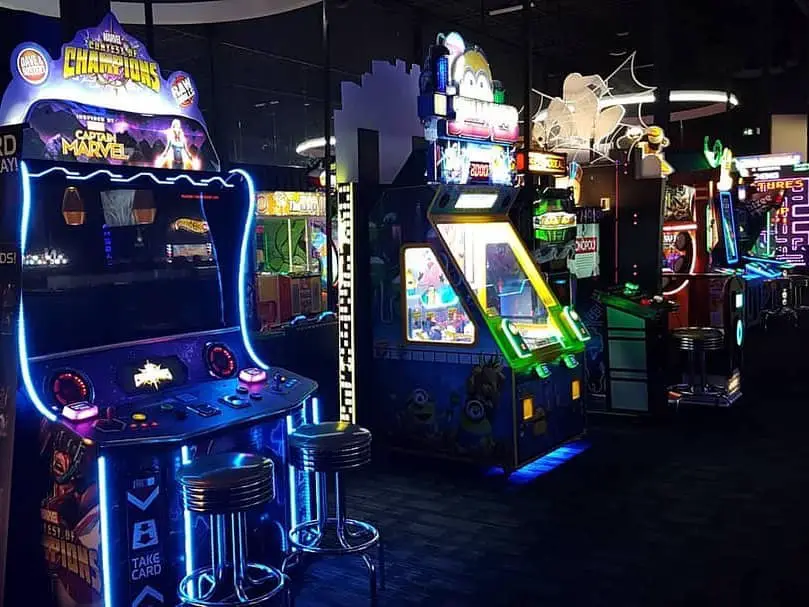
The first computer game was invented at the Massachusetts Institute of Technology in 1962. It was a game called Space War! It would be this game that kick-started a billion-dollar industry, led by the Japanese.
The Japanese have technological leaders for a while. They are quick to embrace emerging technology and without Japanese influence, the video game industry may not exist. While the industry has expanded and is prevalent in many western societies, Japan’s influence is seen all over.
Sony’s Playstation is the most popular home console. Nintendo’s Gameboy is still the most popular handheld console as well. Thanks to the remarkable achievements of Japan’s gaming industry, popular games are played by millions of American children and adults alike.
Space Invaders was one of the first enduring video games, which was released in 1978. This game was widely bought by Americans. In part, no doubt, to the recent release and enormous success of Star Wars.
Arcades became extremely popular hangouts for Japanese and American youths. With releases like Space Invaders and Pac-Man, coin-operated arcade machines started to pop up all over.
By the 1980s Nintendo had begun rolling out home consoles. The Famicom in Japan and two years later the Nintendo Entertainment System (NES) in America. Over 60 million units were sold.
By the end of the eighties, the Gameboy revolutionized the home console market once again. This was a portable console where cartridges could be played on the go. With the Gameboy came the iconic rise of Tetris. This was a Russian game, played on a Japanese console beloved by Americans.
Gaming continues to be one of the most popular pastimes in America. Streamers now make full-time incomes playing games for a living. Competitive games in the form of League of Legends, Fortnite, and Rocket League can have up to $1,000,000 in prize money.
It is thanks to Japan’s initial investment in gaming technology that we are able to enjoy games today. However, it’s now an industry that supports millions of jobs across the world.
There is a stark difference in styles as well. For example, Japanese role-playing games (JRPG) can be vastly different from western role-playing games (WRPG). With JRPG there is a much deeper focus on the storylines and characters over the gameplay.
WRPGs focus more on the player’s interaction with the world than with the game’s main story. First-person shooters (FPS) tend to be more popular among Americans. While in Japan social simulation games are very popular among Japanese players.
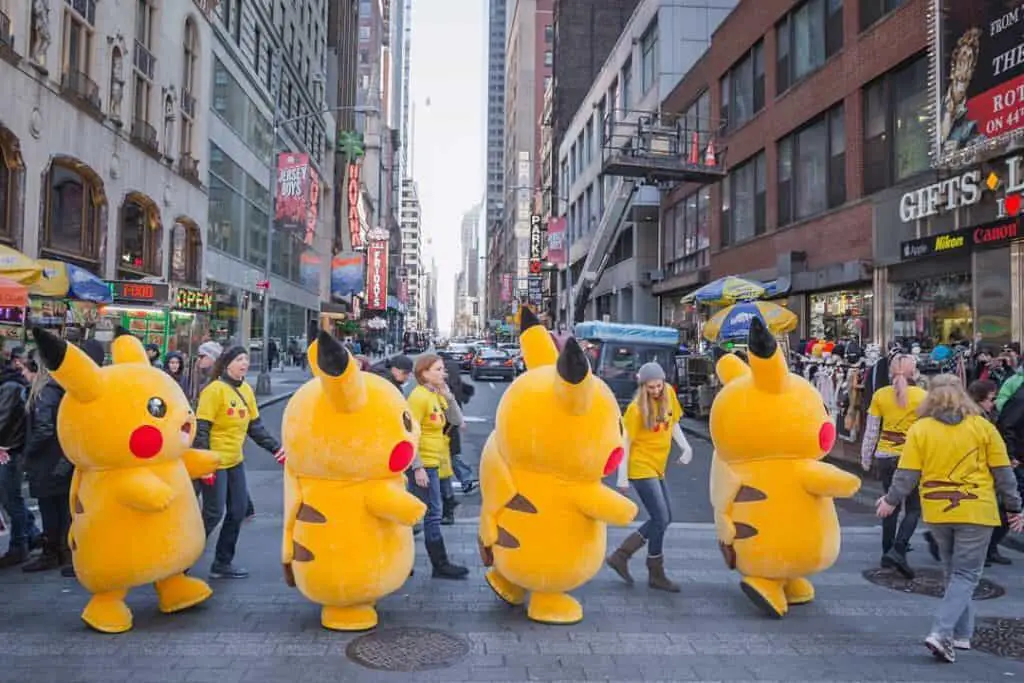
Pokémon is a JRPG that took the world by storm. Initially releasing in 1996, this game about catching monsters has grown to be the biggest selling franchise in the world. Worth over $100 billion, this demonstrates the power of Japanese brands.
Of the 6 franchises worth over $50 billion, 3 of them are native of Japan. Rounding out the list is 3 U.S properties. But Japan holds the top two spots with Pokémon and Hello Kitty.
Pokémon’s success is down to its ability to diversify markets and attract new audiences. It is primarily a kids show, but as people grew up their love for the brand didn’t subside. This means that with each new generation of kids the brand picks up a new audience.
This speaks to Japan’s incredible ability to create media that resonates with people from different cultures. U.S children are brought up with Pokémon and this helps to raise awareness of Japanese culture.
Interested to learn more about Japanese culture? Read also :
– 5 Surprising Ways Japanese Culture Has Changed
– Japanese Culture For Kids
– What Makes Japanese Culture Unique
– Are Dragons In Japanese Culture?
– Japanese Culture For Tourists – What To Know Before You Go
– 7 Things You Need To Know About Japanese Culture For Business
– How Japanese Culture Changed After World War II
– Are Korean And Japanese Culture Similar?
– Japanese Work Ethic – Why Japan Has Such A Great Work Ethic
How Has Japanese Culture Influenced Society?
Japan does things differently. It’s intriguing, interesting and it usually serves a purpose. It wasn’t too long ago that Japan was playing catch up with western societies. In terms of technological achievements, Japan has come a long way in a short time.
Now, the country is a technological leader, and as their culture has opened up naturally people were keen to know more. One of the more interesting things that Americans have taken to is minimalism. The idea that we don’t need to hold onto certain items.
Marie Kondo is the mind behind the book ‘The Life-Changing Magic of Tidying Up: The Japanese Art of Decluttering and Organising.’ The book has been widely successful in America as a manifesto for changing your life.
She has become a popular figure among Americans, particularly young people, who are trying to make a change. As new generations become adults, they explore new ways to live their lives.
In that respect, Americans are a decade or two behind the Japanese. In Japan, the way growing up has changed, and we’re seeing those changes take place in America as well. Things like the usual milestones of adulthood are now happening later.
Marriage, or moving out of home has been occurring later in life in Japan and the same is becoming true of America as well. Part of this due is to economic stagnation, falling wages, and rising house prices.
The fertility rate in Japan has been on a decline, as young people choose to wait, or not have kids at all. Young people in America are now making similar decisions. From a societal point of view, it would appear the United States is catching up with Japan.
During the 1990s Japan suffered a real estate and stock market crash that brought on the economic stagnation. In response to this, the young Japanese pulled away from acquiring stuff for the sake of it. A far greater emphasis was put on personal fulfillment.
This post-materialism focused on experiencing things. Drinks, food, arcades, and other social, exciting experiences. The idea is that happiness is built on these experiences, rather than on the amount of things you own.
The pattern is being repeated in America. In fact, one of the major contributing factors to the decline and eventual closure of Toys R Us is the declining fertility rate among Americans. Less babies being born means there is less demand for toy stores.
Otaku is a slang term in Japan meaning “one’s home.” It’s a word from the 1980s used to describe a type of young adult who forwent normal relationships. Instead, preferring to read manga, watch anime, and play games.
Criticism was made of these otakus, but this is another pattern that has been repeated in the U.S. Video games make up for around 75% of leisure time in America. Although gaming is more widely accepted than it was in the 1980s it shows how trends in America are following those from Japan.
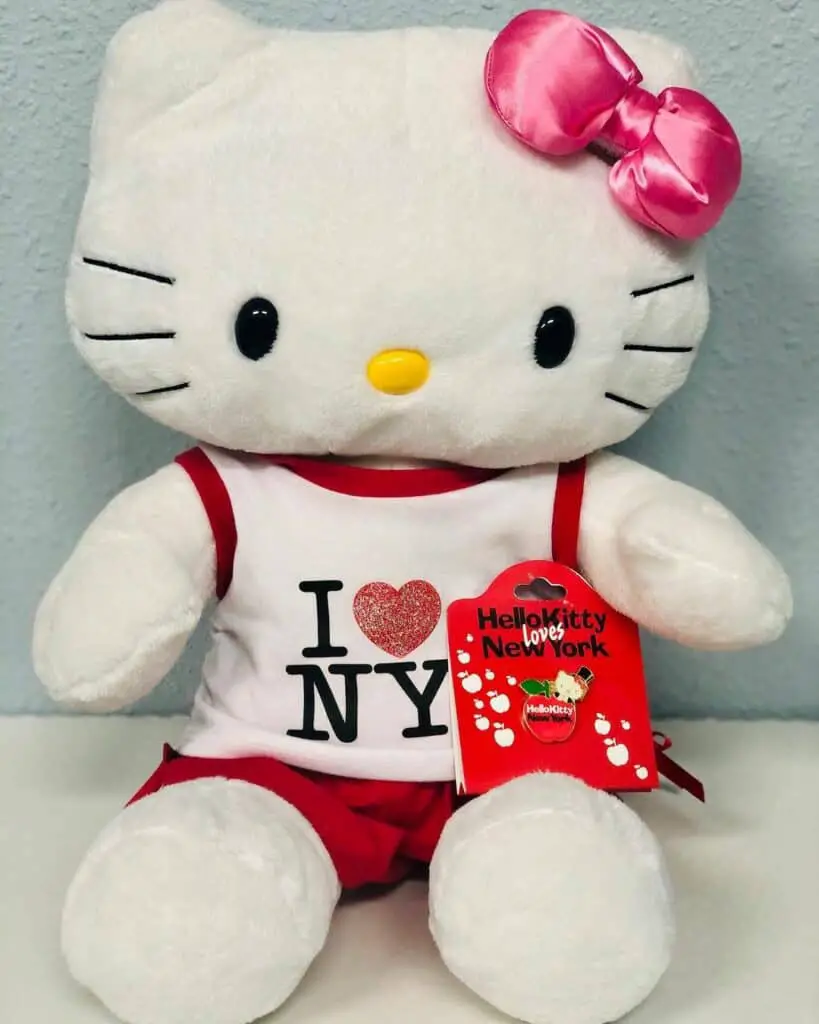
Another example of Japan’s tremendous effect on society is the Hello Kitty brand. This happens to be the second best-selling media franchise behind Pokémon. Hello Kitty is a staple of kawaii.
Kawaii is a subculture with Japanese pop culture. It is a subculture based around cuteness in Japan. Usually, things, or people, that are charming, shy, and childlike.
Particularly among girls, kawaii has become an identity all of its own. Young girls from Japan and America surround themselves with pink, fluffy and cute things.
Hello Kitty and Pickachu from the Pokémon, can be considered kawaii. This subculture phenomenon has incredible buying power. As they represent the two biggest media franchises in the world.
Since it makes money, American businesses try to emulate and capitalize on their success. In doing so they in part help to normalize the phenomenon and it becomes part of everyday culture in America.
How Has Japanese Culture Influenced Food in America?
Food is such an important part of life. America and Japan are no exception to this. Both cultures value food that tastes great, uses good ingredients, and is cheap to produce.
In America, fast food is cheap and easy to come by. Things like tacos, burgers, and pizza. These are items that can be easily found throughout America.
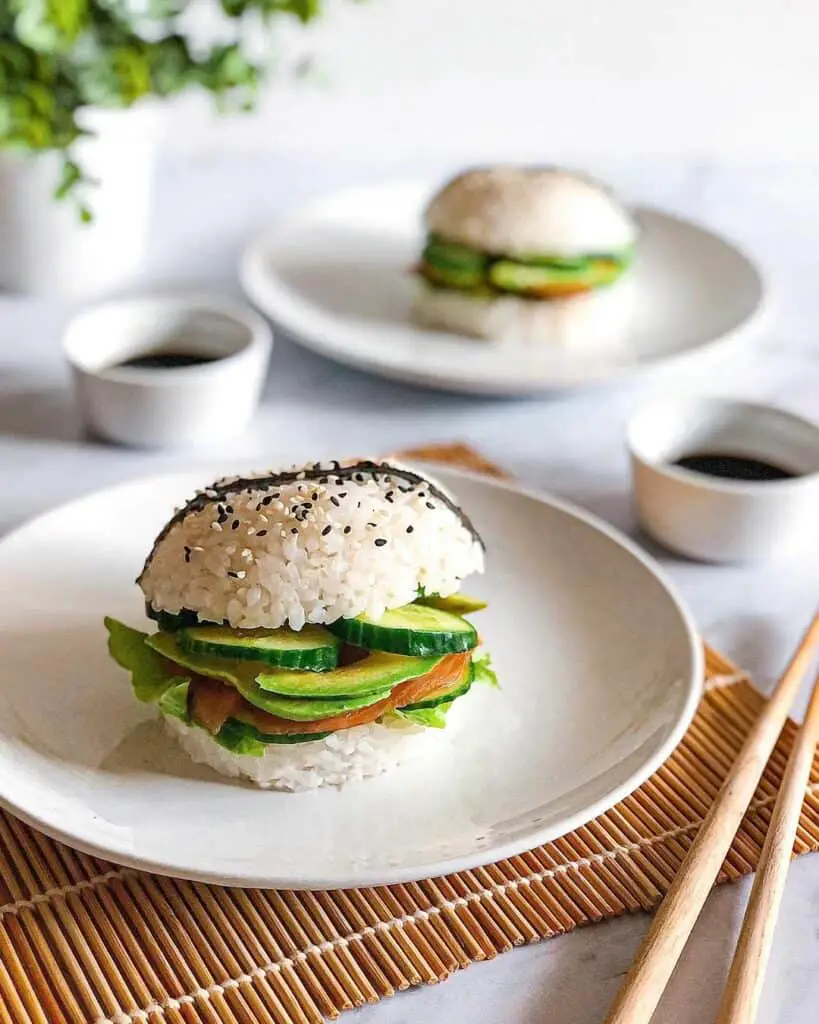
Recently, sushi has seen a ginormous rise in popularity in America. This dish is simple in premise but can be complex in creation.
Sushi is a type of traditional Japanese dish made up of rice, seafood which is often raw, and vegetables. It is a healthy alternative to the fast-food served in America.
The meal started to see some popularity in America sometime in the late 1960s. Japanese restaurants opened up in Japanese neighborhoods around America. These were colloquially referred to as Little Tokyo.
Sushi was originally served in Los Angeles and slowly started to expand outside the confines of the city. Its popularity became more mainstream as it was embraced by Hollywood celebrities.
After the dish became popular in California, other cosmopolitans started to adopt it as well. Places like Chicago and New York would follow suit and sushi restaurants would start to open up in their cities.
By the end of the 1990s, the number of sushi restaurants in America had exploded. As this was actually a cheap dish to prepare, and quick to cook, sushi became a healthy alternative to fast food.
Because it was thought to be nutritious, tasty, and good for you it became a staple in Japanese restaurants. Sushi could also now be found in grocery stores for an on the go snack.
What started in the seventies as a reaction to the health crisis, and became one of the most popular dishes in America. Sushi, which has been eaten in Japan since the early nineteenth century, has had an astronomical rise.
How Has Japanese Culture Influenced Technology and Science?
Japan has made some tremendous contributions to the world of science and technology. Not just in the realm of video games (which, in fairness, it has given a lot to) but in many different fields.
Japan boasts many Noble laureates, particularly in the scientific categories of physics, chemistry, physiology, and medicine. In fact, it only places behind the States in the number of Nobel Prize winners in the sciences.
Japan’s first Nobel Prize winner was Hideki Yukawa, who won the award in Physics. This was “for his prediction of the existence of mesons on the basis of theoretical work on nuclear forces. The incredible work of Hideki Yukawa has earned him a place among the Nobel Laureates.
Two of the most fascinating Nobel Prize winners from Japan are Isamu Aksak and Hiroshi Amano who also won the prize for physics. In 2014, they won “for the invention of efficient blue light-emitting diodes which has enabled bright and energy-saving white light sources.’
They share his prize with Japanese born American Shuji Nakamura.
Blue LEDs have been thought to revolutionize the 21st century in a similar fashion to the way the light bulb did for the 20th century.
One of the biggest industries in America that has been impacted by Japanese culture is the car industry. Japanese cars are some of the most popular in America. Car manufacturers from Japan include Toyota, Honda, Nissan, and Mitsubishi, although not an exhaustive list.
In the seventies and eighties, Japanese car manufacturers pioneered the compact car. These cars had more room, better mileage for gas, were reliable, and cheaper than American alternatives.
In the 90s Japanese manufacturers were able to offer an affordable all-wheel drive. They also offered it in all sorts of cars, from hatchbacks to minivans.
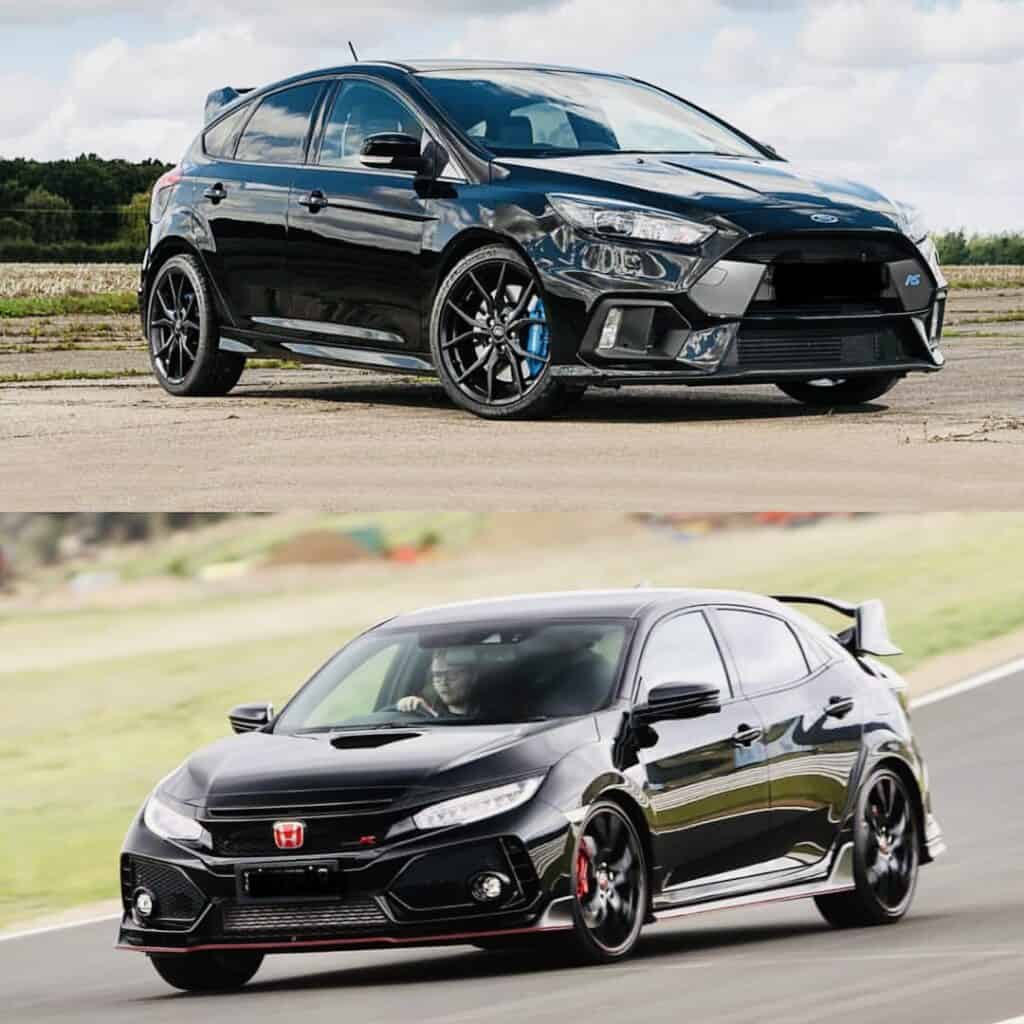
Japanese companies Toyota and Honda were the first manufacturers to bring the hybrid to U.S shores. While hybrids are a popular offer from a variety of companies, the concepts originate from japan. The Toyota Prius maintains its status as one of the most popular hybrids available.
Americans were, and still are, very proud of their home-built car manufacturers. Although the quality of American cars couldn’t compete with the Japanese alternative, manufacturers decided to start building their cars on American soil.
With that came an abundance of new jobs building these cars. Plus it was a major investment in America. The first plant opened in 1982 by Honda.
A major American actor in the seventies threw his weight behind Nissan. Paul Newman put his acting career on hold to start racing. This unexpected career change was even more surprising when he passed on American sports cars and chose the Datsun instead.
This helped increase Nissan’s popularity among car buyers. Seeing the academy award-winning actor throw his weight behind the brand propelled Nissan to success.
While Japan’s influence on America only began a relatively short while, it cannot be understated. Many facets of an American’s life are touched by Japanese culture.
From the entertainment, you enjoy as a child, into adulthood to the car you drive, Japan’s influence will be there with you.
Pikachu, Mario, Sonic, and Goku are among some of the most beloved characters of all time. We have to pay our thanks to the Japanese creatives who brought these characters to life.
Let us not forget Marie Kondo, who is helping American’s across the country declutter their lives with a simple question. ‘Does it spark joy?’ We have a lot to be thankful for as the Japanese culture has had an amazing influence.

